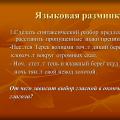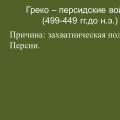Online images of the Sun from the SOHO satellite. Online images of the Sun from the SOHO satellite Solar activity monitoring
Extreme ultraviolet photograph of the Sun taken from STEREO-A. The photo was taken at a wavelength of 171 angstroms (17.1 nm), which is usually colored blue. Photo: NASA
On August 21, 2016, NASA engineers managed to restore communication with the STEREO-B spacecraft, one of two STEREO (Solar TERrestrial RElations Observatory) observatories for studying solar activity.
The last time the STEREO-B observatory made contact was on October 1, 2014, after which contact was lost. For 22 months, NASA specialists tried to save the device - and they still succeeded!
Another attempt to establish communication with the lost device was carried out through NASA's Deep Space Network (DSN), an international network of radio telescopes that is used for radio astronomy research and for controlling interplanetary spacecraft. This time the attempt was successful.

Solar Observatory STEREO-B. Illustration: NASA
On August 21, 2016 at 18:27 EDT, the DSN established focus on the downlink beam from STEREO-B. Mission Operations specialists analyzed the signal for several hours to establish the coordinates of the spacecraft. They then remotely turned off the high voltage transmitter to save battery power.
Now that STEREO-B's coordinates are known, engineers can turn the transmitter back on remotely at any time. They plan to do this in the near future in order to continue the process of restoring the satellite’s functionality, restoring control over its movement, assessing its performance and checking the functional readiness of all subsystems and scientific instruments.

The illustration shows the positions of the observatories and their orbits relative to the Earth, Venus, Mercury and the Sun. Illustration: NASA
The STEREO-A and STEREO-B solar observatories are designed to capture the Sun from unusual angles. For example, on the opposite side of the Earth. Thus, for the first time, scientists were able to photograph the Sun from all sides at the same time. One of the devices gradually lags behind the Earth (Behind - B), and the other, on the contrary, overtakes it (Ahead - A). Due to this, you can simultaneously observe the Sun from two different points and create three-dimensional images.
It was the specific orbit of the STEREO devices that caused communication interference. Due to the slow drift relative to the Earth, at some point in time, each of the devices went behind the Sun, that is, to the point of the orbit opposite from the Earth. At this time, radio contact with him was interrupted for three months due to interference.
The two STEREO spacecraft were launched in October 2006, with a two-year operational life expectancy. As is often the case with NASA spacecraft, they were able to operate much longer than planned. When scientists realized that the devices could go into the interference zone behind the Sun, and then come out and continue working longer than planned, they began to plan this operation.
Each of the devices was equipped with a hardware communication loss timer, programmed to automatically reboot the systems if no commands were received from Earth within 72 hours. This timer was implemented to automatically correct problems that could cause a loss of communication. This means that after going behind the Sun, the device rebooted every 72 hours, after that it adjusted its orbit according to the stars, pointed the antenna towards the Earth - and continued trying to get in touch. Having gone behind the Sun, the device had to do such reboots for three months. Therefore, NASA engineers tested in advance the performance of both devices after a reboot, deliberately jamming communication with them for 72 hours.
STEREO-A successfully passed the test, but its twin STEREO-B, after the connection was jammed and a forced reboot on October 1, 2014, for some reason did not get in touch after the required 72 hours and 20 minutes. He was unable to point the antenna correctly at Earth. Based on the weak and fragmentary signal, engineers determined that an unexpected failure had occurred in the Inertial Measurement Unit module, which determines the rotation speed. This module provided incorrect information to the computer guidance and control system of the device - and reported rotation even when the device was in a static position. Because of this, the antenna could not aim at the Earth. Worse, due to incorrect rotation information, the device could turn the solar panels on the wrong side and lose some of its power. And even worse, the control computer could decide to use the engines to eliminate the rotation of the device. Since there was actually no rotation, after such a correction it could actually begin.
The specialists tried to send a command to the STEREO-B control computer to ignore the readings from the faulty IMU module, but the connection with the device was already lost.
STEREO-A continued to work normally, emerging from behind the Sun, but it was no longer possible to obtain stereo pairs of photographs from the two observatories.
Engineers have yet to find out the exact cause of the malfunction, but the main thing is that now communication with STEREO-B has been restored. Solar observatories are almost ten years old. Scientists expect that they will also send valuable scientific information about solar activity. In addition to photographs of the Sun itself, the STEREO observatories took photographs of interesting events in circumsolar space. For example, in April 2007, they took magnificent photographs of Comet Encke as it flew past the Sun. The photographs revealed signs of turbulence in the comet's tail from clumps of ionized gas.
Photos of Comet Encke near the Sun in April 2007

Photos of Comet Encke near the Sun in April 2007. Photo: NASA/STEREO
If communication with STEREO-B is lost again, the engineers have a backup plan. In 2019, the device will be at a close enough distance to establish direct visual contact, view it through the lens of the Hubble Space Telescope - and determine the degree of rotation. Around 2023, the Earth should catch up with STEREO-B - and then it will be possible to contact it at close range or even bring it to Earth for study, if it is economically feasible.
Articles periodically appear in various media about the fruitless search for extraterrestrial intelligence outside the solar system, but the reality turned out to be much simpler.
In our solar system, on our luminary, there is intelligent alien activity observed daily and in detail project "Stereo" literally right next to us, and they constantly lie to us that these are image defects, although if you look closely at the photographs, you can see that the corona of the sun sometimes covers these objects, how can an image defect be covered by the corona of the sun?
At the end of October 2006, a Delta II 7925-10L rocket was launched from Cape Canaveral Florida, which launched into space two identical observatory satellites with a large set of equipment for observing and recording the parameters of the Sun. Rotating in an eccentric orbit, for several weeks, now moving away from each other, now getting closer, remaining close enough, as if lining up to approach the Moon. The first (Ahead) approached the Moon and, under the influence of its gravity, was thrown forward from the Earth. The second (Behind), having been captured by the lunar gravity for several weeks, was thrown in the opposite direction. If you look at the NASA animation, the Earth is a green dot, the Moon is white, Ahead is red, Behind is blue, and the yellow arrow indicates the direction to the Sun.

When both satellites settled in the orbit of the Sun, Ahead is closer to the Earth, Behind, behind the Earth and a little further. The satellites drifted, gradually moving away from the Earth in different directions. The mission was named - project "Stereo". On the NASA animation, the Earth is a green dot, the Sun is yellow, “A” is red, “B” is blue. The orbits of Mercury, Venus and Mars are white.

The image below shows the location of the satellites for the period 02/10/2011.

All information found on the NASA website is dedicated to project "Stereo" and is freely available. After setting up the equipment in March-April 2007, high-quality images were received from satellites. In the photographs obtained from Ahead and Behind, you can see mysterious objects of clearly artificial origin. These objects were of enormous size, appeared out of nowhere, moved at enormous speed around the Sun, “landed” on the Sun, took off from it and disappeared in an unknown direction. And the same thing continues to this day. Many forums on the Internet are filled with information about these objects, but no information has been received from official sources. Photos that are posted in real time are “contrasted”; all objects are visible in the pictures in the form of white dots and lines. Questions asked by NASA about these objects were answered by the responsible mission officer project "Stereo", Dr. Joseph B Guman. He explained that the white dots with four black dots around them are greatly enlarged image compression artifacts. We will try to look at the “defects” in pictures with a resolution of 2048x2048, which anyone can download and view using the following links:
NASA's Solar Terrestrial RElations Observatory (STEREO) project consists of two identical satellites in two different orbits around the Sun. STEREO-Ahead is located a little closer to the Sun than the Earth, and STEREO-Behind is a little further away than the Earth. This causes them to move further and gradually fall behind the Earth's orbit, so that they are constantly in the twilight zone relative to the Sun. The site contains data from SECCHI's instrument: Ultraviolet Thermal Imaging (EUVI) cameras that image the Sun at 195 nm wavelengths and two white light coronagraphs: COR1 and COR2.
Communications with STEREO Behind were lost on October 1, 2014, due to multiple hardware anomalies affecting control of the spacecraft orientation. There is currently no real-time data available from STEREO Behind. Should communications be reestablished in the future we will feature any data coming from STEREO Behind on this page.
Solar activity in real time
Just like DSCOVR, the STEREO mission has instruments on board (PLASTIC and IMPACT) to measure the composition of the solar wind and strength/direction of the interplanetary magnetic field at the space craft. Due to the location of STEREO Ahead, this data is of great use to see what kind of space weather conditions we could expect from any incoming coronal holes days in advance.
This page presents photos from various space and ground-based instruments for studying the Sun, its activity and space weather. All pictures were taken almost online.
Photos are updated every 30 minutes, or with a longer period. If the photo is missing or not updated (see date), it means the spacecraft is undergoing maintenance work. As soon as information begins to flow from it, the photo will automatically appear.
You can watch the image of the Sun online and make your observations thanks to satellites for studying and monitoring the state of outer space, such as: SDO, SOHO, Stereo A and B, etc.
In all online photographs of the Sun, the time indicated is Universal Time, which is +4 hours to Moscow Time.
Solar activity monitoring

The wavelength is 211 angstroms (active regions), which corresponds to a temperature of about 2 million degrees. SDO snapshot.

The wavelength is 131 angstroms (flare regions), which corresponds to temperatures of the order of 0.4, 10 and 16 million degrees. SDO snapshot.

The wavelength is 335 angstroms (active regions), which corresponds to a temperature of about 2.5 million degrees. SDO snapshot.

The wavelength is 1700 angstroms (photosphere), which corresponds to a temperature of about 5000 degrees. SDO snapshot.

Combined image at wavelengths 304, 211, 171 angstroms. SDO snapshot.

A smoothed photograph of the photosphere of our star in the helioseismic magnetometer HMI of the SDO apparatus.

STEREO consists of two space observatories - one ahead of the Earth in its orbit, the second behind. From these two perspectives, scientists will be able to study the structure and evolution of solar storms as they explode from the Sun and move through space.
This film illustrates the spherical map of the Sun as it appears today, formed from a combination of images in front and behind the lighthouse, along with SDO/AIA images in between. The video begins by showing the Sun as seen from Earth, with the 0 degree meridian point in the middle. The map is then rotated 360 degrees so you can see the side of the Sun not visible from Earth.
About STEREO's mission
STEREO(S olar T.E. rrestrial RE lations O bservatory (Solar-Terrestrial Links Observatory) is the third mission of NASA's Solar-Terrestrial Probe Program. There are two almost identical space observatories operating here - one ahead of the Earth in orbit, the second behind. Provides the world's first stereoscopic photograph to reconnect and study the Sun and the patterns of its coronal mass ejections (CMEs).
Scientific objectives of the STEREO mission
- Understand the causes and mechanisms of coronal mass initiation
- Characterize coronal mass multiplication through the heliosphere
- Reveal the mechanisms of particle acceleration in the small corona and interplanetary medium.
- Improve determination of the structure of diffuse solar wind
 Groshev Nikolay - book series - stalker books - ebook - our swag - bar reactor
Groshev Nikolay - book series - stalker books - ebook - our swag - bar reactor Verb conjugation Features of verb conjugation in Russian
Verb conjugation Features of verb conjugation in Russian The cities of Hellas are subject to Macedonia Outline of the Peloponnesian War download the Belarusian edition
The cities of Hellas are subject to Macedonia Outline of the Peloponnesian War download the Belarusian edition